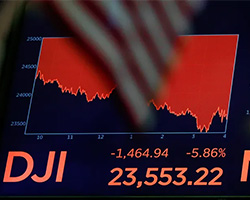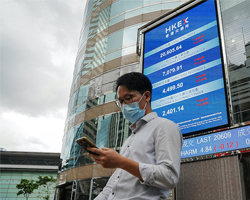Dow Jones Drops Over 1000 Points Amid Economic Slowdown Fears and Tech Stock Pressure | Daily Market Analysis
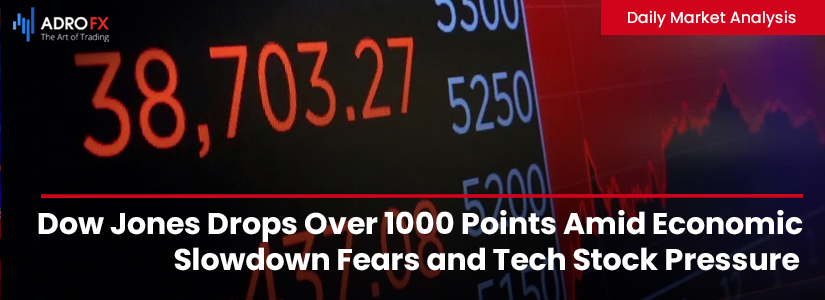
Key events:
- Australia - RBA Interest Rate Decision (Aug)
The Dow Jones Industrial Average plummeted over 1000 points on Monday as mounting fears of an economic slowdown exerted pressure on high-performing technology stocks.
The Dow fell by 1033 points, or 2.6%, while the S&P 500 declined by 2.9%, and the NASDAQ Composite dropped by 3.4%. These significant losses followed last week's selloff, driven by concerns of an impending economic downturn.
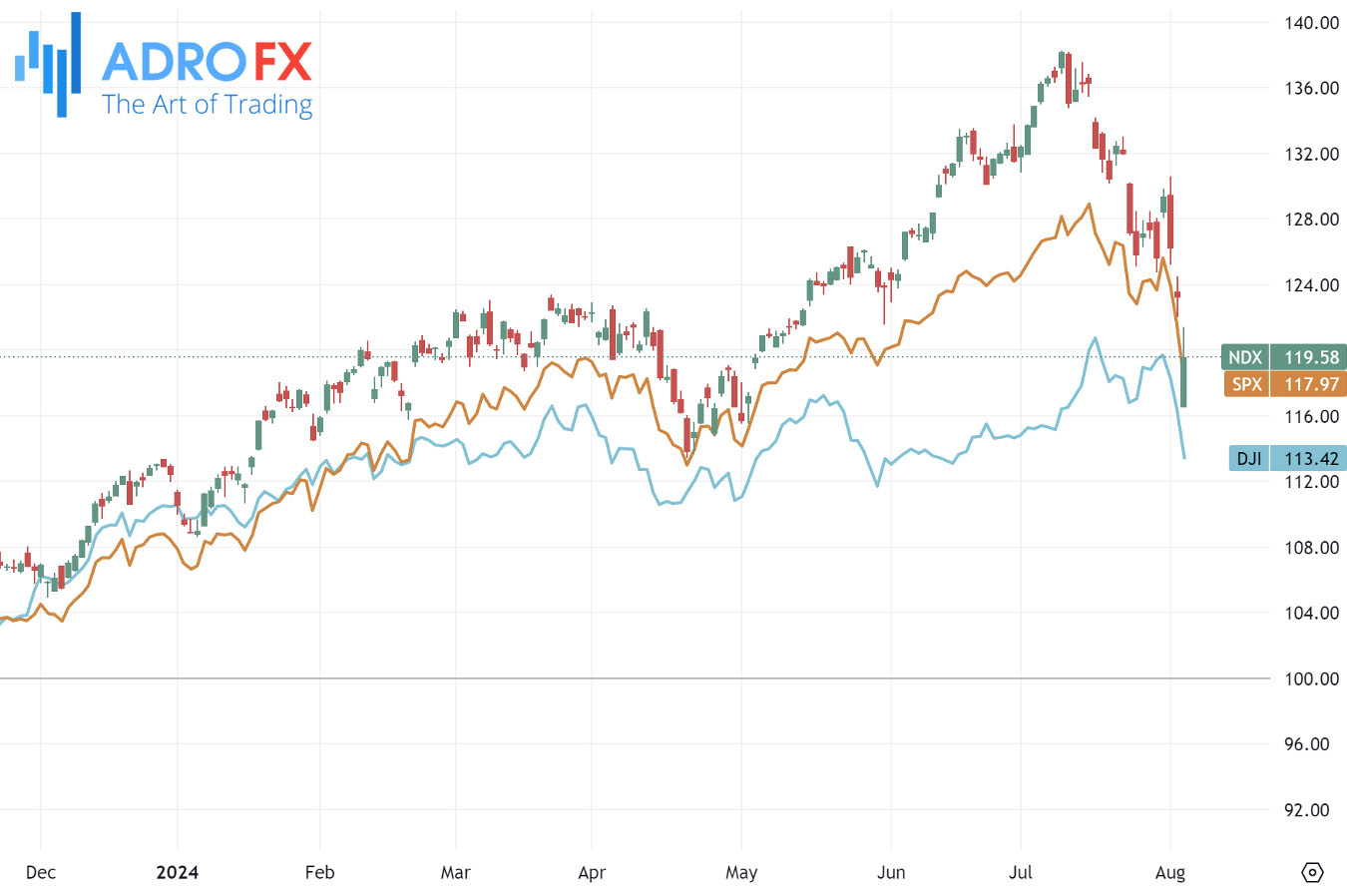
A series of weak economic indicators have heightened concerns that the Federal Reserve has kept interest rates too high for too long, reducing the chances of a soft economic landing. These worries were intensified on Friday when nonfarm payrolls data for July fell significantly short of expectations, indicating a substantial cooling in the labor market.
While the disappointing data has increased hopes for more interest rate cuts by the Fed, it has also dampened enthusiasm for riskier assets. Analysts at Goldman Sachs expect faster cuts, pointing out that the funds rate appears excessively high, with the Fed seemingly lagging after focusing too much on inflation and holding steady in July. They believe the priority has now shifted to supporting the economy.
However, Monday's economic data suggested that a recession is not imminent. The July ISM Services PMI exceeded economists' estimates, and the prices paid index, a measure of inflation, also came in higher than expected.
Investors will be closely watching Federal Reserve speakers this week, anticipating aggressive rate cuts. Chicago Federal Reserve President Austan Goolsbee indicated on Monday that the central bank is prepared to respond to signs of economic weakness, suggesting that current interest rates might be overly restrictive. When asked about the potential impact of a weakening labor market and manufacturing sector, Goolsbee avoided committing to a specific course of action but hinted that maintaining a restrictive policy might not be sensible if the economy is softening.
In corporate news, Apple stock fell over 4% after Warren Buffett's Berkshire Hathaway sold nearly half of its stake in the iPhone maker as part of a broader selloff. Alphabet declined more than 6% after a Federal judge ruled that Google is a monopolist and violated antitrust laws in the search and text advertising markets. Nvidia dropped 7% following reports of a delay in the launch of its upcoming artificial intelligence chips due to design flaws.
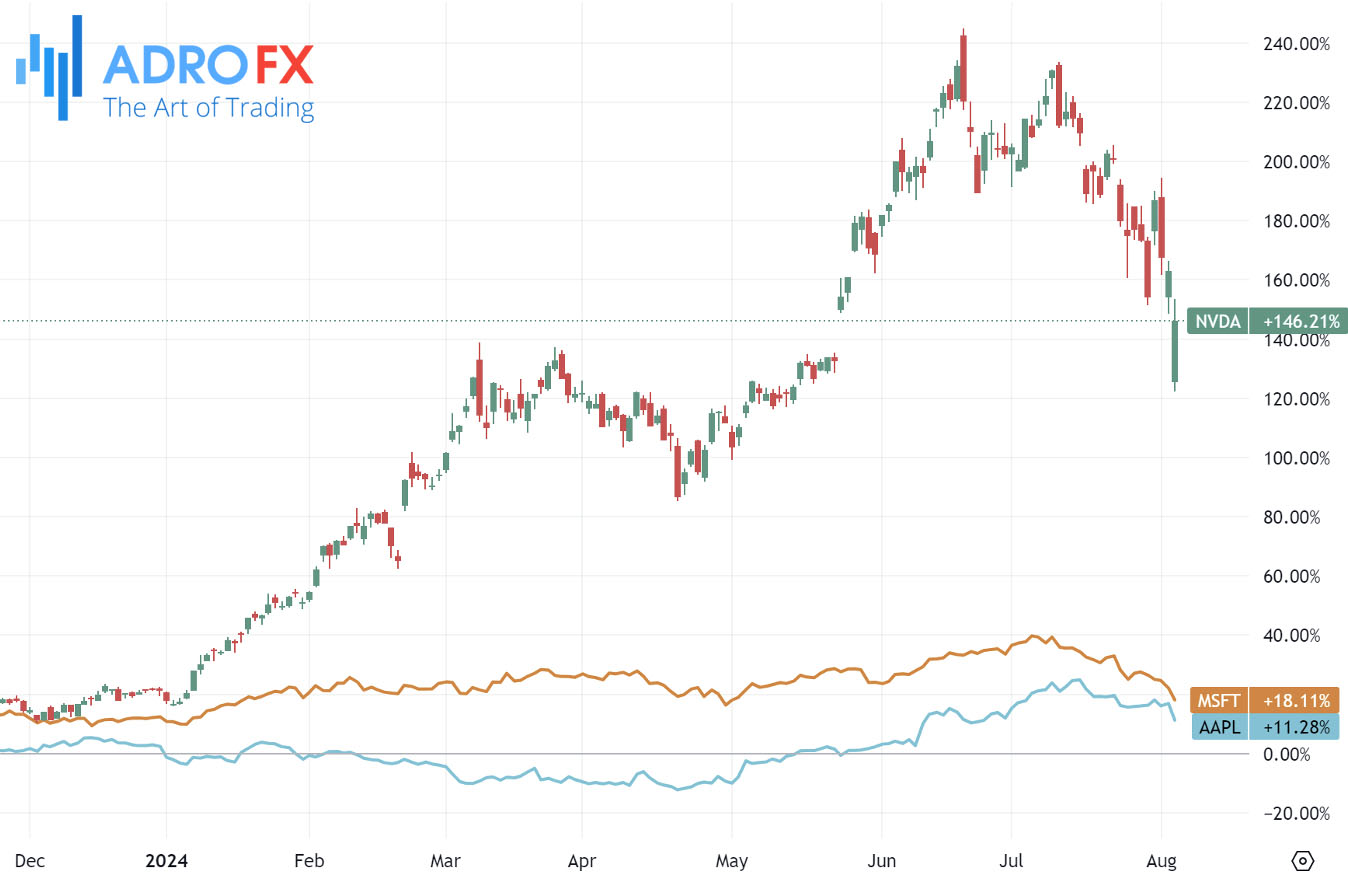
Gold prices struggled to build on the previous day's rebound from the 50-day Simple Moving Average support around the $2,365-2,364 region, marking a one-week low. During the Asian session on Tuesday, the precious metal traded within a range. A turnaround in global risk sentiment, evidenced by a rally in equity markets, created headwinds for the safe-haven asset.
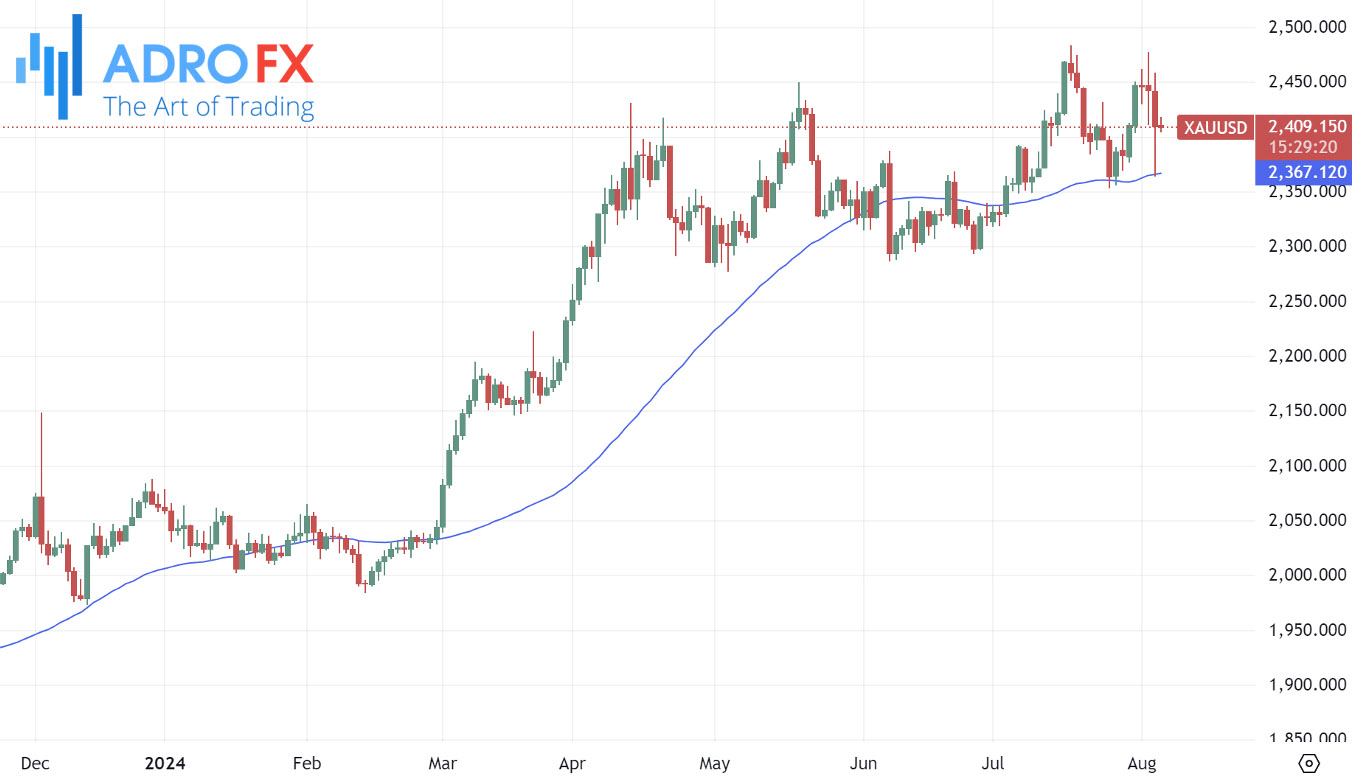
Softer US macroeconomic data has fueled concerns about a downturn in the world's largest economy, raising expectations for significant interest rate cuts by the Federal Reserve. This outlook is likely to keep US bond yields and the USD in check, while geopolitical risks from ongoing conflicts in the Middle East could continue to support gold prices. Caution is advised before betting on an extension of last week's decline from near the all-time high, especially with no major US economic releases scheduled.
On Tuesday, the Japanese Yen retreated from its six-month peak as the pace of unwinding carry trades slowed. Nevertheless, the Yen strengthened against the US Dollar due to increasing anticipation of additional monetary policy tightening by the Bank of Japan.
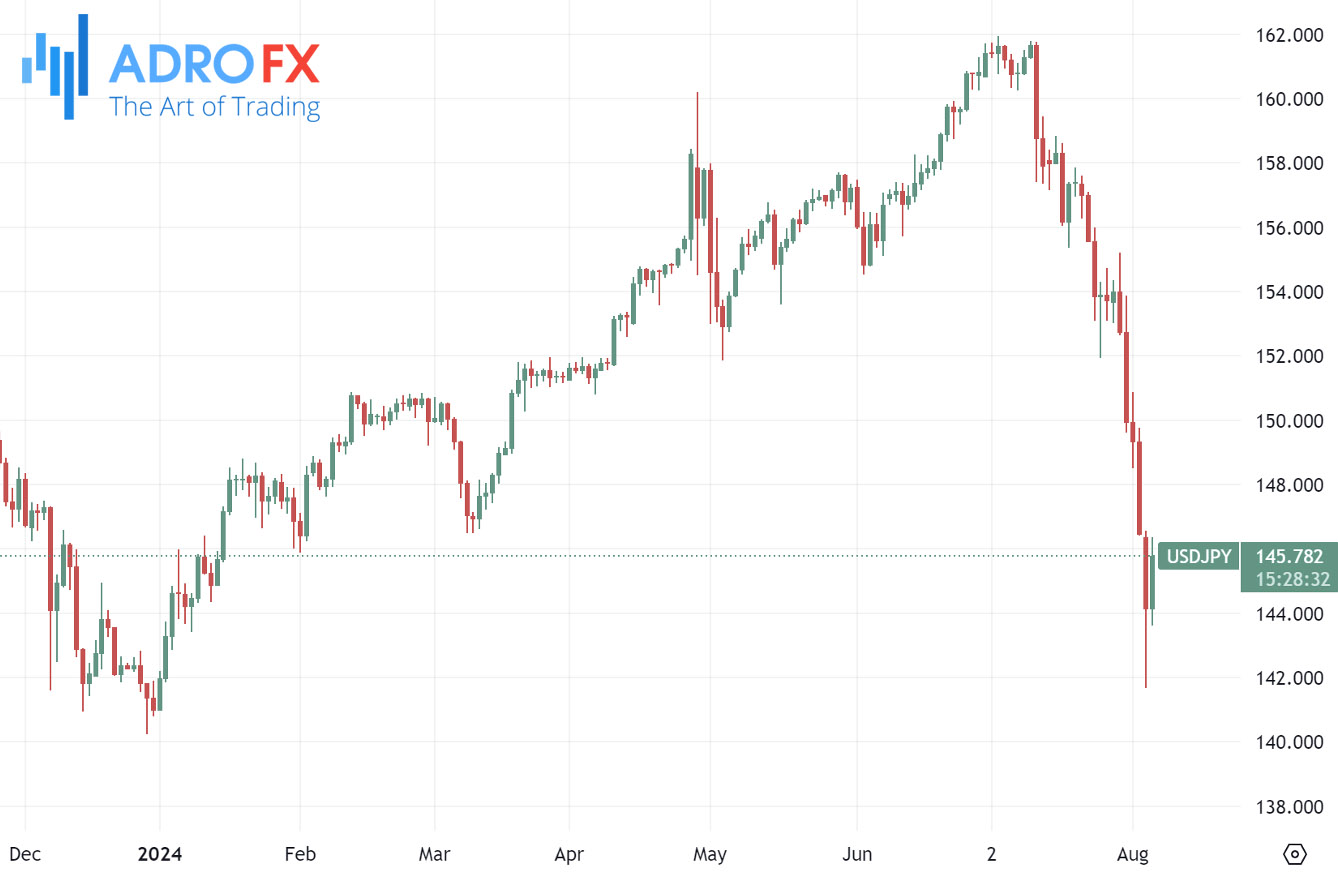
The Bank of Japan raised its short-term rate target by 15 basis points to a range of 0.15%-0.25% and announced plans to cut its monthly purchases of Japanese government bonds to ¥3 trillion starting in the first quarter of 2026. Meanwhile, the Australian Dollar remained strong following the Reserve Bank of Australia's decision on Tuesday to maintain the Official Cash Rate at 4.35% for the sixth consecutive time. Traders are closely watching RBA Governor Michele Bullock's speech for future policy direction insights.

However, the AUD faced pressure against the USD due to swift policy adjustments by central banks and increasing fears of a hard landing for the US economy. Additionally, second-quarter inflation data has decreased expectations for another RBA rate hike, with markets now predicting an RBA rate cut in November, much earlier than the previously forecasted April next year.
